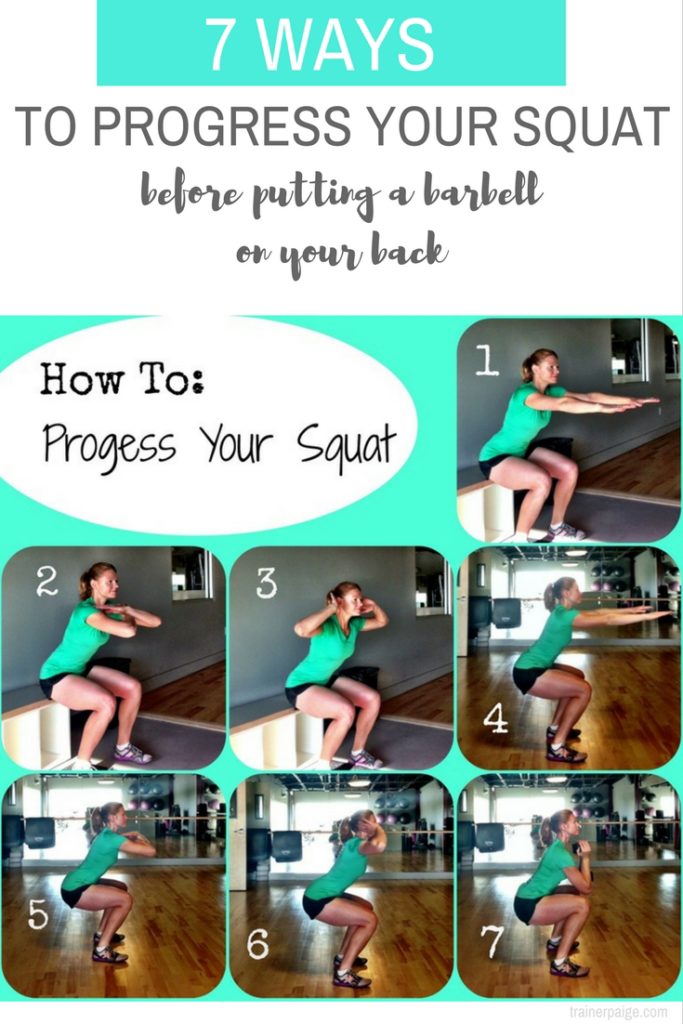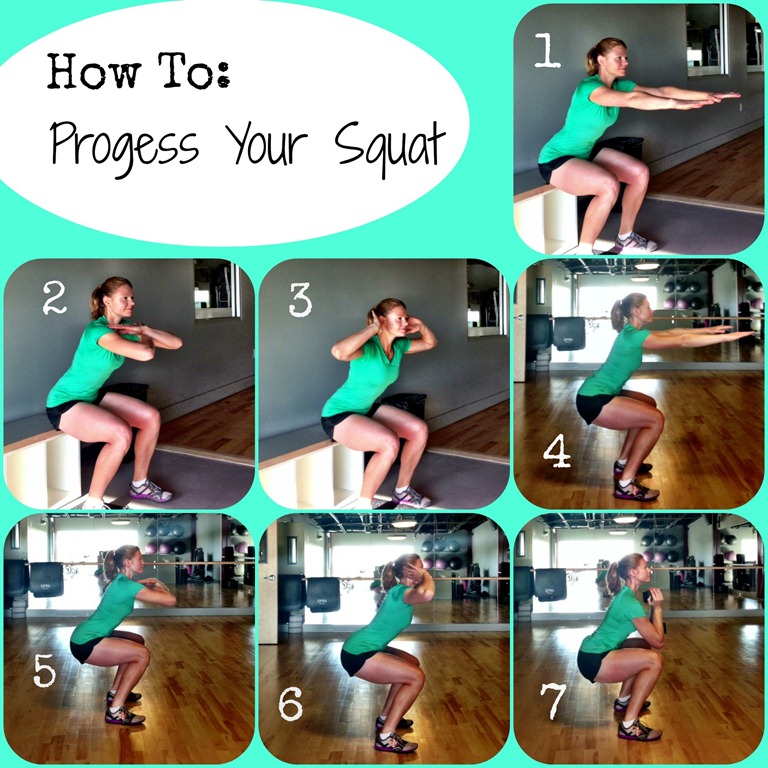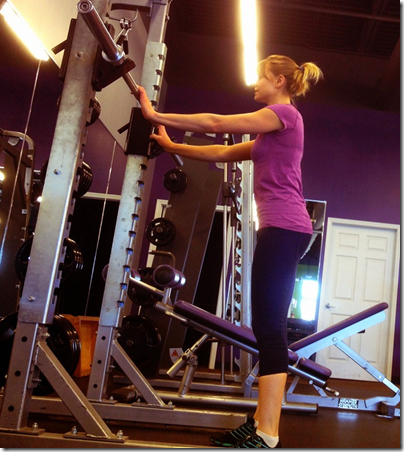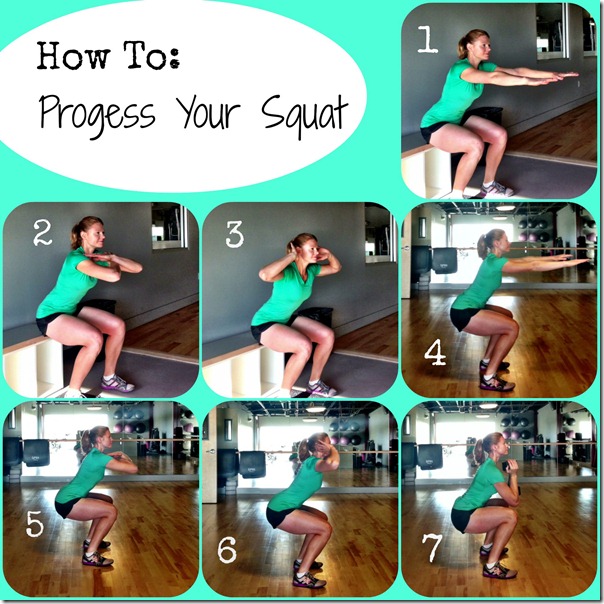Some thoughts and discussions from me.

Good morning, my friends!
I hope your week is going well. Last night Shane and I went to the new Thai restaurant that opened up in our neighborhood. Thai food has to be my very favorite ethnic food…ok, tied with Mexican. We’ve only gotten Thai once since we moved here, and it was a less than stellar experience. I’m happy to say that changed with last night’s dinner!
We ordered veggie rolls to split for an appetizer, both had a couple of Singha beers, and then I had the salmon green curry with sticky rice. So good! After dinner, we took Niko for a walk, and I spent a solid 2 hours working on online client programs. I had 3 people sign up all last week, and they’re itching to start asap, so I’ve been cranking out the programs this week. Good thing it’s one of my favorite parts of training ![]()
Moving on, today I want to talk to you about one of my very favorite body weight exercises – The Squat.
When I first meet with a new client, I always include a squat in their initial workout, but not the kind you might think. Barbells and squat racks are sexy and a ton of fun. And with the crossfit craze and the LIFT HEAVY!!! trends going on the fitness world in social media, a lot of new lifters are being misinformed.
I’m not saying lifting heavy isn’t a good thing. It’s actually my favorite way to lift, despite the term “lifting heavy” getting thrown around so blasé that it’s completely lost its meaning. But…that’s another tangent for another day.
Before I get too off topic, let me say this: if you haven’t perfected your Body Weight Squat form completely, you should be no where near a barbell.
You should start out with a body weight squat, but not just any body weight squat. I actually follow a squat progression with all of my new clients. If a client can successfully complete a squat at that level, then we progress to the next level. And I actually have SIX squat progressions before I have my client even pick up a weight to squat with.
Squat Progressions/Regressions:
When I start my clients off with a squat, no matter what, I start them with a beginner body weight squat: squatting to a step or bench, with arms extended to counter balance the shift gravity.
Good squat form: With keep hip to shoulder width apart – toes can be slightly outturned – push the hips back while keeping the back straight and chest lifted. Keep the knees behind the toes as you lower your hips down as far as your flexibility/mobility will allow. Then, push into your heels and push the hips forward and straighten the knees to stand.
So, back to the progressions.
1. Arms extended, squatting to a bench or risers
2. Arms crossed in front of the chest, squatting to a bench or risers
3. Hands behind head, squatting to a bench or risers
4. Arms extended, squatting as far down as you can go without breaking proper form
5. Arms crossed in front of chest, squatting as far down as you can go without breaking proper form
6. Hands behind head, squatting as far down as you can go without breaking proper form
By now, you have the body weight squat down, and you’ve built up enough strength to support more than your body weight. Only then, do I have clients pick up a weight, and proceed to a Goblet Squat
7. Goblet squat
After the Goblet squat, there are, of course more progressions – dumbbell front squat, offset squat, barbell front squat, zercher squat, and then, finally…the back squat. But more on that in another post on weighted squats![]() I should also note that just because you are able to do weighted squats, that doesn’t mean you should never include body weight squats in your routine. I love throwing a good body weight workout in there every once in a while and crank up the reps for a change.
I should also note that just because you are able to do weighted squats, that doesn’t mean you should never include body weight squats in your routine. I love throwing a good body weight workout in there every once in a while and crank up the reps for a change.
All right, I’m off to teach a core class! Then I’m meeting this lady for a hike in the mountains. Have a great day!
Do you include body weight squats in your routine?






Love this Paige! I couldn’t agree with you more, if your squats not perfect you have no business lifting heavy just yet! Great post that I’m sure I’ll be referring people back to in the future 🙂
Danielle recently posted…Watermelon Creamsicles
Thank you, Danielle!
squats are my very favorite! doing legs today in fact!
Lindsay @ Lindsay’s List recently posted…my season of YES!
I love to squat!! It does wonders for the rear 🙂
Kaitlin @4loveofcarrots recently posted…Wedding Planning Updates
I might have to try a goblet squat I do all mine with a 20-25lb bar on my shoulders, but that looks like it could be another good option! I am trying to build muscle and get stronger!!
I actually don’t use body weight squats too often, unless I’m doing plyo. I do love squats in general though! Back squats are my favourite, but I like goblet squats too.
Sam @ Better With Sprinkles recently posted…Rehashing July.
Great list of progressions!
Squatting is my favorite – lunging on the other hand is definitely not.
I also love goblet squats:)
Lisa recently posted…Taking In Moments
What a great post – love the progressions!! I do actually like the term lift heavy, but I get where you’re coming from too. It’s too common to see the person in the gym lifting more than they should with awful form. I always want to say something, but there’s no way to actually do that without being a total jerk either. Unless I know them.
Heather @ Better With Veggies recently posted…NPC Bikini Competition Wannabe
Squats are my number one love/hate exercise! I’m doing a lot of zercher squats at the moment in preparation for my comp and they’re brutal on the joints. Great post!
Tara @ Sweat like a Pig recently posted…Chobani hits the UK
Squats = always. Mix it up with weighted & non-weighted, though, depending on the day!
Also, Thai food = love!
Alex @ Alex Tries it Out recently posted…Race Recap: Color Run 2013 – Blending
Great post! I love body weight squats, and squats in general because there are so many variations. Thanks for putting out a post on the form. It’s something that everyone needs a reminder of, even more experienced exercises.
Liesl @ Fitnessinthekitchen recently posted…Fit Focus: Combination Exercises + A Workout!